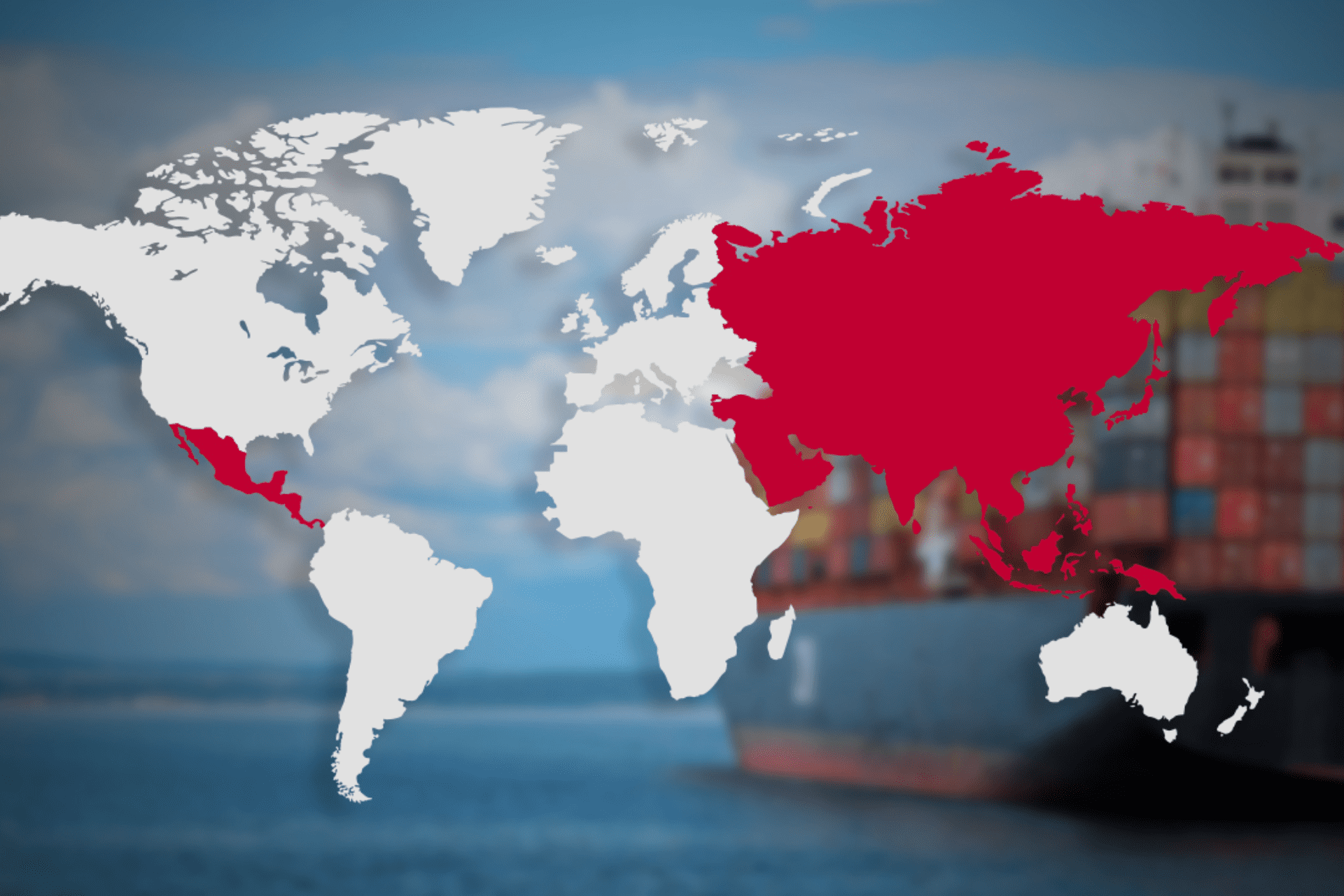By María José Gamba
In October 2025, a headline shook the trade world: Mexico is importing more from Asia than from its USMCA partners (the U.S. and Canada) for the first time ever. This is more than a statistic—it signals a fundamental transformation in international logistics and supply chains between the U.S., Mexico, and Asia.
Data from Mexico’s Ministry of Economy and INEGI show that from January to July 2025, imports from Asia totaled approximately USD 157 billion, surpassing the USD 152 billion coming from the U.S. and Canada. China, South Korea, Taiwan, and Vietnam led the growth, particularly in electronics, machinery, and auto parts.
This trade pivot forces a rethinking of how goods move across borders, how logistics hubs are managed, and how companies position themselves in the evolving North America–Asia trade corridor.
Why Asia Is Gaining Ground in Mexico
For decades, Mexico’s trade largely followed the North American axis. But recent trends have shifted this balance:
Asian manufacturing sophistication: Asian exporters now provide high-value intermediate goods critical for Mexican industries.
E-commerce and micro-shipments: Small-volume imports from Asia reach Mexican consumers faster than ever.
Cost pressures & diversification: Companies are seeking alternatives to traditional North American suppliers to reduce risk.
Between January and July 2025, Asian imports to Mexico rose 12.1% year-over-year, accounting for 42.5% of total imports. This surge demonstrates the growing influence of Asia in the Mexican market.
The International Logistics Challenge
This shift brings complex international logistics challenges.
Longer transit times: Asia–Mexico routes are lengthier than U.S.–Mexico routes, increasing exposure to delays and higher costs.
Cross-border coordination: Mexican distributors must now manage inputs from both Asia and North America, complicating customs, warehousing, and inventory strategies.
Infrastructure pressure: Pacific ports like Manzanillo and Lázaro Cárdenas face higher container traffic, making efficient port operations and inland transport critical.
Digital & resilient logistics: Real-time tracking, demand forecasting, and flexible routing are no longer optional—they are essential for competitiveness.
Trade Policy, Tariffs, and Strategic Implications
Mexico is responding to this shift with trade measures. Proposed tariffs on over 1,400 product categories from Asia, some as high as 50%, aim to protect domestic industry. These include electronics, auto parts, and textiles.
While such policies create uncertainty, they also highlight the importance of logistics operators that can navigate complex customs, tariff risk, and supply chain planning.
Opportunities for Americas Forwarding
This trade shift opens opportunities for companies like Americas Forwarding, which specializes in connecting Mexico with global markets:
End-to-end supply chain solutions: From ocean transport to cross-border operations and inland distribution.
Optimized routing & tracking: Leveraging technology to ensure reliability and transparency.
Customs & compliance expertise: Guiding businesses through tariffs, origin rules, and regulatory requirements.
By adapting to the new international logistics reality, Americas Forwarding helps companies maximize efficiency, reduce risk, and capitalize on Mexico’s growing role as a hub between Asia and the Americas.
Mexico as a Trans-Pacific Hub
Mexico’s geographic position makes it an ideal bridge for goods moving between Asia and North America. By strengthening port capacity, inland logistics, and digital operations, Mexico can consolidate its role as a regional logistics leader.
Companies investing in technology, multimodal infrastructure, and cross-border partnerships will thrive in this new trade environment.
Conclusion
The rise of Asian imports is not just a commercial shift—it’s a call to action for the international logistics sector. Companies that anticipate trends, leverage technology, and build resilient supply chains will define the future of trade in Mexico and beyond.
Americas Forwarding is ready to lead in this new era, connecting Mexico, the U.S., and Asia with efficiency, expertise, and strategic insight.

